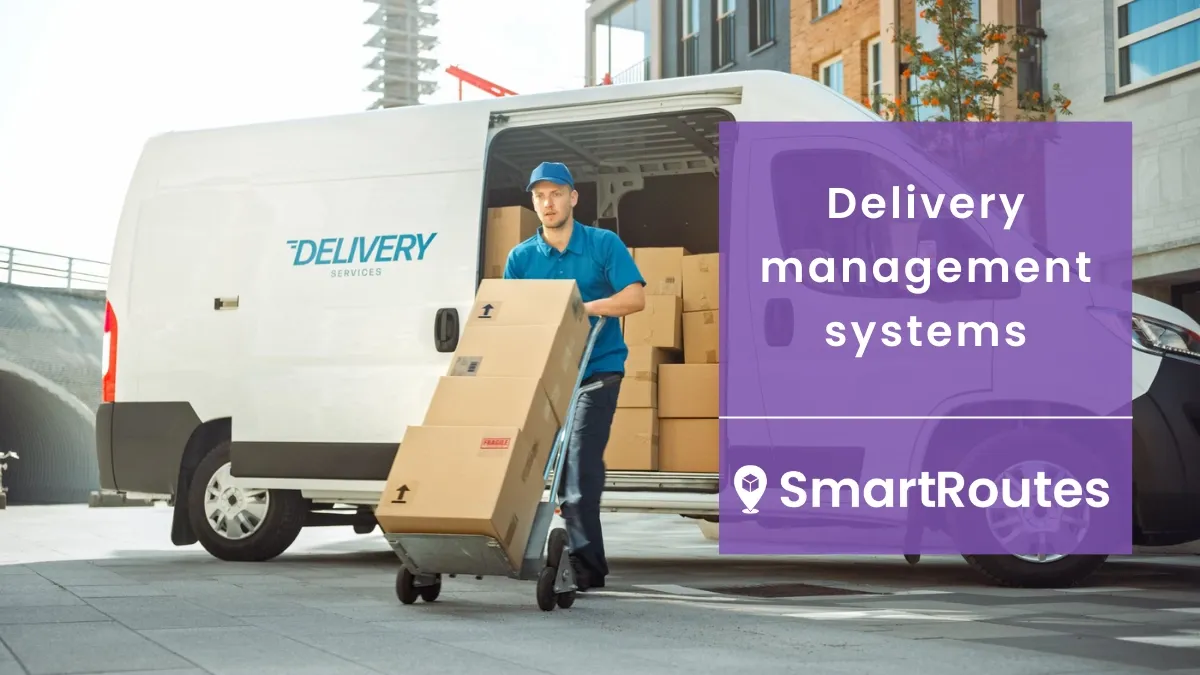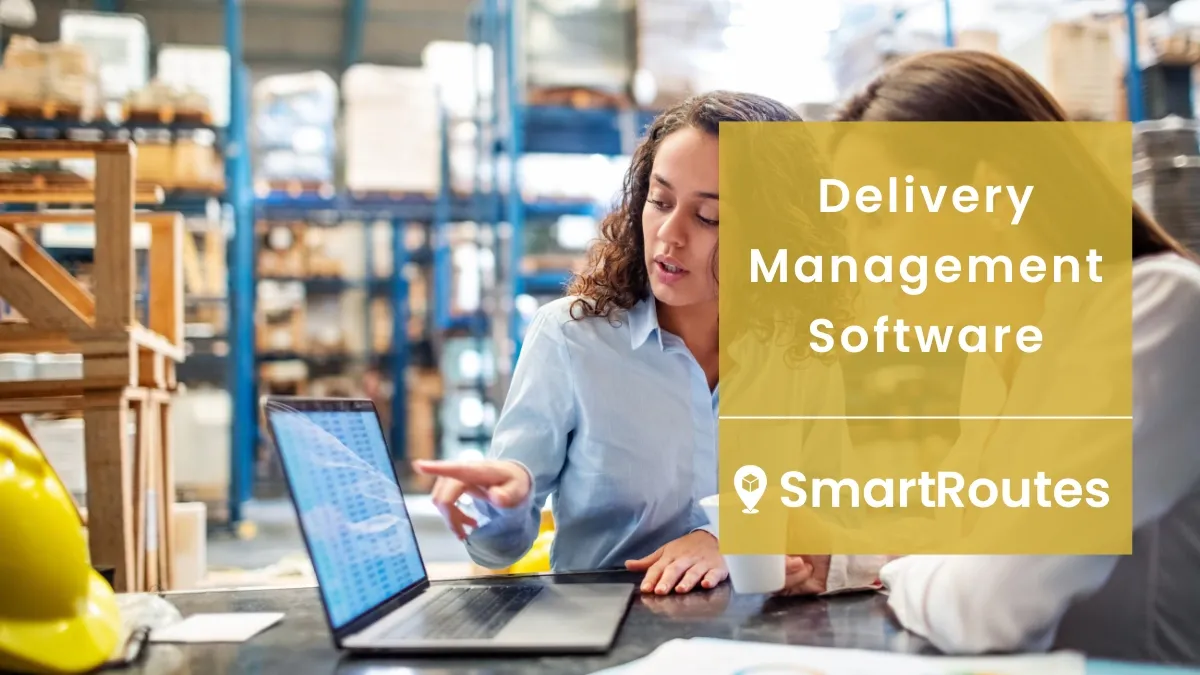Delivery Management Systems
How to think about delivery management systems this year so your company grows fast.

I was talking to a business we work with - a grocery delivery company that has 8 vehicles on the road 6 days a week - about how they are approaching home delivery systems this year. Their delivery manager, a smart guy who thinks deeply about his work, had an interesting take on delivery and what it means this year when we say 'delivery is completed'.
For him delivery is actually the core of what their grocery business does now. He wants to focus energy on being amazing at delivering stuff. For him, through that process, you learn so much about your customers and you can grow the business much more than through old methods of bricks and mortar stores and generating foot traffic.
It certainly got me thinking about how to approach deliveries this year and what it might mean for your customers, the environment and your bottom line. Let’s take a look.
What are delivery systems…..not?
Before eCommerce and online ordering exploded in popularity over the past 10 years businesses were entirely focused on physical stores and getting customers into them to buy….stuff. Now delivery systems are coming increasingly to the fore as about 20% of all retail sales globally are done online.
In the UK alone over 8,700 high street retailers closed their doors in the first half of 2021. Businesses that don’t get online simply die. But more than that, businesses that don’t take delivery systems seriously also die. A YouGov poll in the UK found that 56% of adults had a problem with an online order delivery in the previous 12 months. We know that 32% of customers will not buy from you again if you get delivery wrong. So, what then are delivery systems....not?
They are not simply the completion of an online order, a job that has to get done after the real sale was made online. They are not something that you can use to cut costs on or outsource to the cheapest operator and expect to retain customers. They are not a race to the bottom where you try to get the most from stretched delivery people and pay the least amount of money for. If any of these attitudes are within your delivery team then you are looking at either steep decline in online orders or slow decline in online orders. Both will result in your business failing as online orders increase in the coming years.
So, now that we have cleared that up, let’s get on to the more interesting points raised by my food delivery manager recently.
SmartRoutes Route Planning Software
Streamline your entire delivery process, all from one platform

The way to think about delivery management this year
The singular touch point with your customer
My delivery manager, Mark, understands that his customers will probably never meet him. They mightn’t even visit his stores. They might only ever interact with a delivery driver dropping off their grocery selection. For this reason, he makes sure every delivery vehicle, no matter if it is a van, an e-vehicle, or even a bike, has the company branding on it and looks well. Vehicles are kept clean because they are his “shopfront on the road”. Equally, his delivery team are dressed as if they were serving in a store, they have branded jackets or shirts and they are trained to interact with customers as if it were a store-type interaction, not just drop the package, hit the doorbell and run. Mark is proud that his customers stay loyal to the company and order and reorder because of this experience they have with his multi-stop route team.
An opportunity to learn about your business
Mark implemented driver tracking via GPS and immediately saw something that no one in his (very large) company had noticed before. Delivery vehicles were crossing over each other all the time. Not just delivery vehicles from one store location but vehicles from lots of different stores were overlapping with each other constantly. Seen on a map it showed diesel vehicles driving into territories that other drivers were already covering. Something had to change quickly. Mark implemented clear territorial boundaries between individual stores and ensured that even within a store that different drivers never overlapped each other unnecessarily. Upshot? 30% saving in miles driven and a huge leap forward in terms of sustainability objectives for the company as a whole. Mark was surprised what simple GPS tracking was showing, even down to whether drivers were moonlighting with other deliveries! For businesses that operate fleets, the reality of your business can often be obscured unless you are willing to learn from the tools at your disposal. Last mile carrier tracking is a great way to improve the overall delivery experience.
Potentially biggest negative impact your company will have on the environment
Changing mindset can be hard. Business people are so used to cutting costs and waste but now they have to think about cutting emissions too. They are also having to balance competing objectives where sustainable growth might be more expensive in the short term. The good news is that delivery management is ripe for change. It is possibly the most environmentally damaging activity most companies undertake and it is true that the options to fix that have never been better. So a few things to consider include:
- Electric vehicles to replace diesel vans. Phase out the diesel fleet as it comes due for renewal and reap the government incentives that are on offer in most countries.
- Think about pedal or electric two-wheel options. Cargo bikes are incredibly versatile, fast and strong for delivering in urban and suburban environments.
Delivery management is about managing the density of your customers
Going back to Mark and the insights he gained from seeing all deliveries nationally over time. It was a feature of all his delivery teams that they serviced one or two customers who were miles outside the typical delivery territory. These outlier customers caused a lot of extra miles to be driven even though they didn’t yield much in sales. The lesson? Keep your delivery area as small as possible. Don’t deliver to outlier customers. Tailor your online ordering system to reject customers from outside your territory. Make your delivery routes as dense as possible. Maybe only deliver to a territory every second or third day so you can build up a density of orders. All of these efforts to increase the density of customers will cut down on costs and emissions. It will also improve the speed and accuracy of deliveries.
An exercise in repeatability and automation
Finally, let’s think about automation and repeatability. Mark was ruthless in cutting out any manual processes that contributed to deliveries in his company. That meant no taking customer orders over the phone….ever. No handwriting out delivery sheets, no team meetings to figure out the best delivery schedule for the day. No new processes that aren’t set out by the delivery manager so people are not learning how to do something from scratch unnecessarily. Mark connected the online ordering system to the internal pickers system so they could get the orders without having to check in with any manager. The pickers then were auto-assigned a delivery driver so they could simply set the orders down in that driver’s loading bay ready for them to load their vehicle. No unnecessary meetings, process or conversations, just automation and the repeatability of the process every day. This is Mark’s mantra and one that all delivery teams, no matter how big or small, can learn from.
How to do delivery management so it grows your business
So what can you do to be efficient, to learn & grow, and to wow your customers?
Automate everything you possibly can
Be like Mark in the example above and connect your online ordering system with your internal systems and delivery management system. Don’t know how? Talk to us today.
Things you can easily automate with SmartRoutes:
- Customer notifications
- Customer queries about delivery updates
- Proof of delivery capture
- Driver notes from a delivery driver app
- Dispatch notes
- Route planning and optimization
- Online ordering to delivery management system integration
- Reporting on delivery activities
Taken altogether you are saving hundreds of hours of manual labour every month by investing in automation systems. And it is not as hard as it looks with delivery teams getting automation up and running in a matter of days, not weeks or months.
Become data driven
- Be like Mark and analyze the data you see from your delivery operations. What areas contain the most customers?
- Do delivery drivers have full loads always leaving the depot?
- Are there some customers that are dragging our delivery vehicles out of their normal routes?
- How can we keep delivery drivers fully loaded and delivering to the smallest territory possible?
- Are some delivery drivers more efficient than others?
There are always things that can be learned from observing real world deliveries on a map or from end-of-day reports. Use the data to reinforce good processes and cut out inefficiencies.
Think about the 20 steps to your customer
Going back to our client Mark it is interesting to see how he thinks about the last 20 steps to his customers. When his delivery vehicle pulls up outside a customer’s house is the moment he obsesses about. Every detail of this interaction should be thought through. The driver’s clothing, their manner, the way in which their package is presented, handed over. Even down to the way a doorbell is rung, where the driver stands to wait for the customer to answer. He holds training on where to park outside a house so it does not cause obstruction or danger to people. He trains his staff not to be on the phone when engaging the customer. He trains them to take driver notes and proof of delivery in every case possible. He scripts out conversational elements the same way in-store staff might be trained. Company values and branding are on display during the delivery interaction and all of his delivery team know this. Mark understands that he probably cannot differentiate his products from other competitors in a modern economy but he can certainly differentiate the delivery experience so his customers remember it positively.
Implement a Delivery Management System, Today!
If you would like to talk to us about implementing a delivery management system for your business, you can avail of a 7-day free trial with SmartRoutes or get in touch today and a member of our team will be in touch.
Frequently asked questions
1. What are delivery management systems?
Delivery management systems are software solutions designed to streamline and optimize the entire delivery process. They encompass various tools and functionalities that facilitate efficient order management, route planning, scheduling, tracking, and reporting, aimed at enhancing the overall logistics and delivery operations for businesses.
2. What are the key benefits of using a delivery management system?
Using a delivery management system offers several advantages, including improved operational efficiency, enhanced route optimization leading to reduced delivery times and costs, better fleet management, real-time tracking and monitoring of deliveries, increased customer satisfaction through accurate ETAs and notifications, and comprehensive data analytics for performance evaluation and decision-making.
3. How does a delivery management system optimize route planning and scheduling?
Delivery management systems utilize sophisticated algorithms and real-time data to optimize route planning and scheduling. They consider multiple factors such as delivery locations, traffic conditions, vehicle capacities, time windows, and delivery priorities to create the most efficient delivery routes. By constantly analyzing and updating information, these systems dynamically adjust routes to minimize travel time and fuel consumption.
4. Can a delivery management system integrate with existing software or platforms?
Yes, most modern delivery management systems are designed to integrate seamlessly with existing software and platforms. They often offer APIs (Application Programming Interfaces) or connectors that allow integration with various systems like ERP, EPOS, CRM, e-commerce platforms, inventory management systems, and more. This integration ensures smooth data flow and compatibility across different business operations.
If you enjoyed this blog, you might also be interested in:







